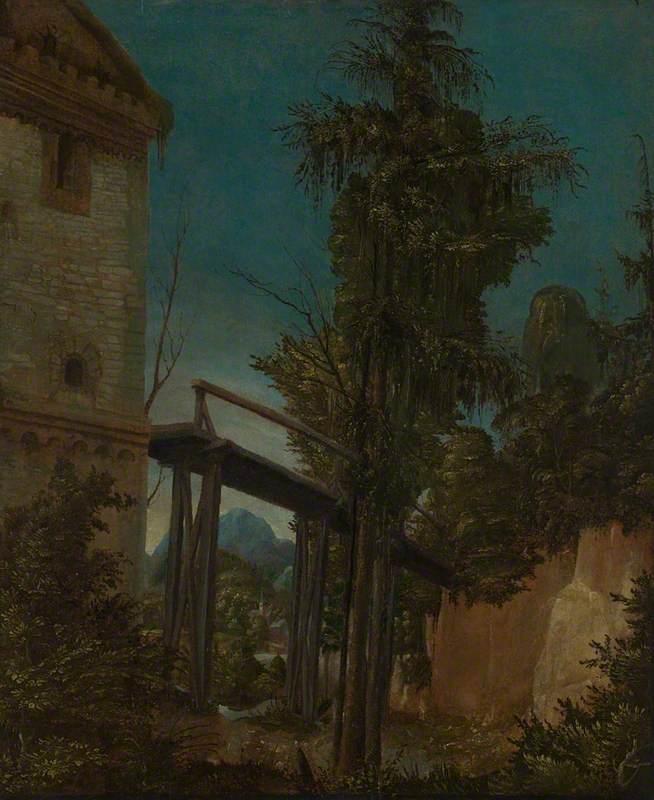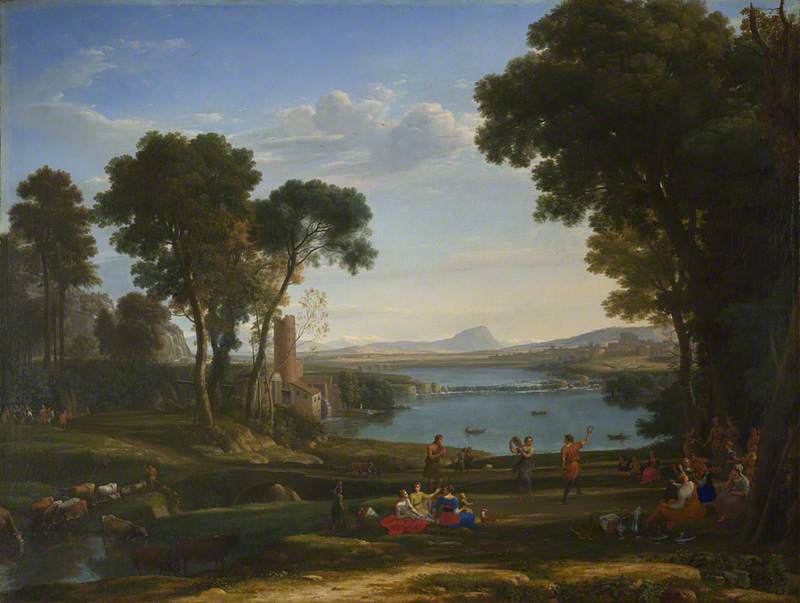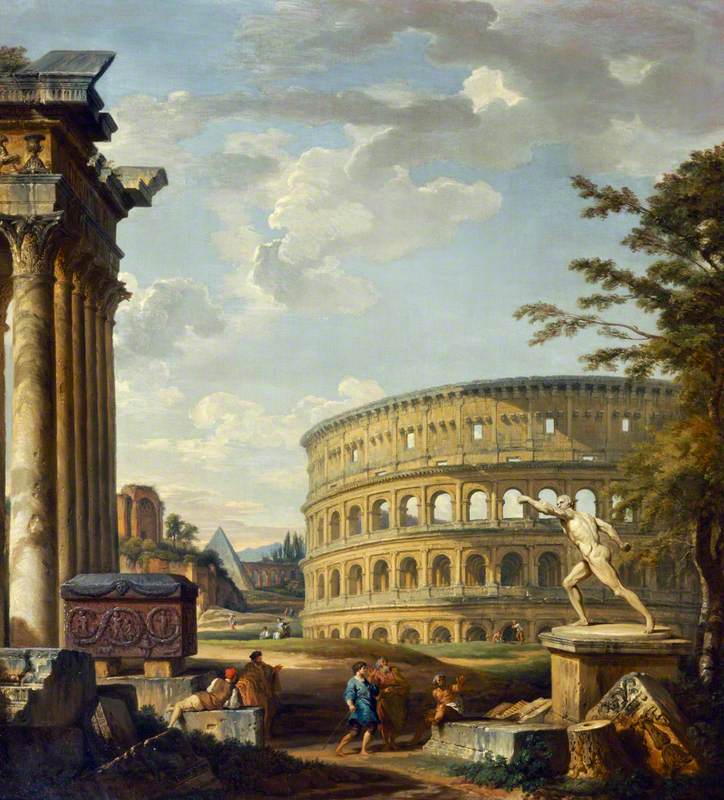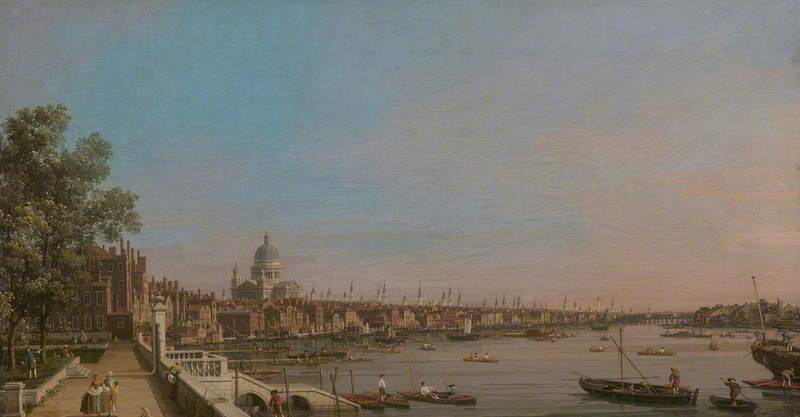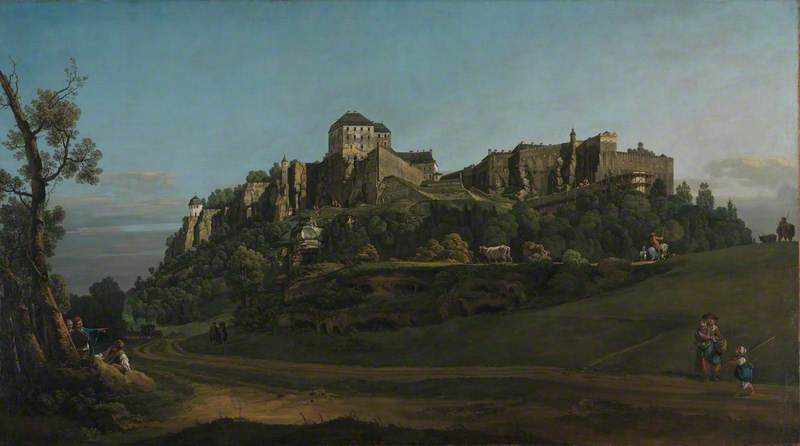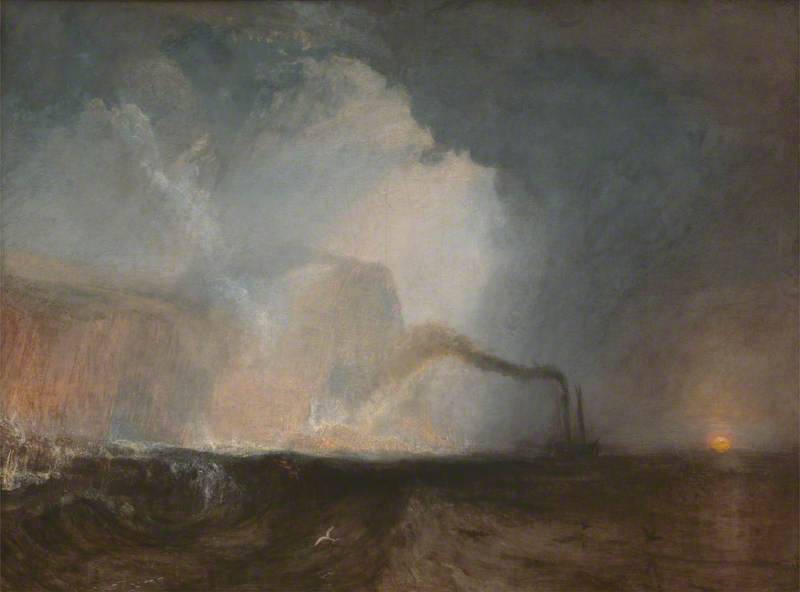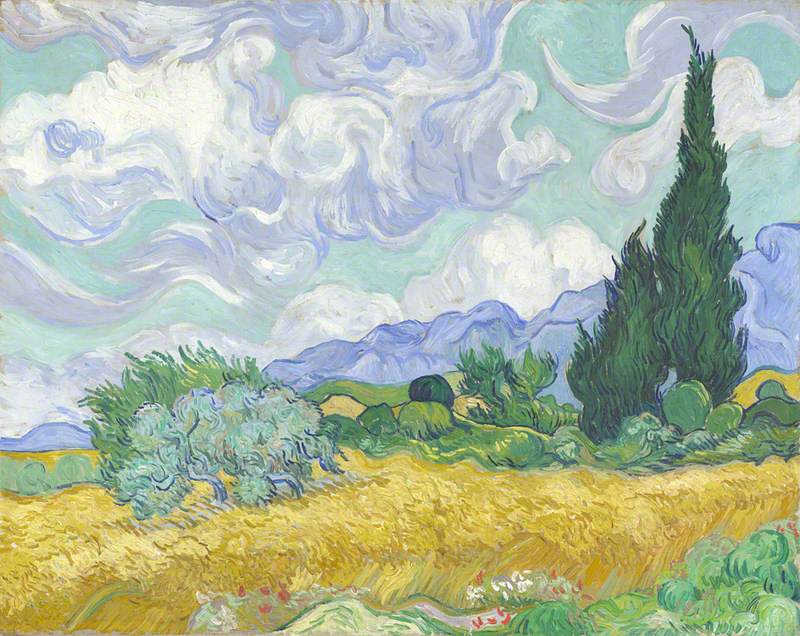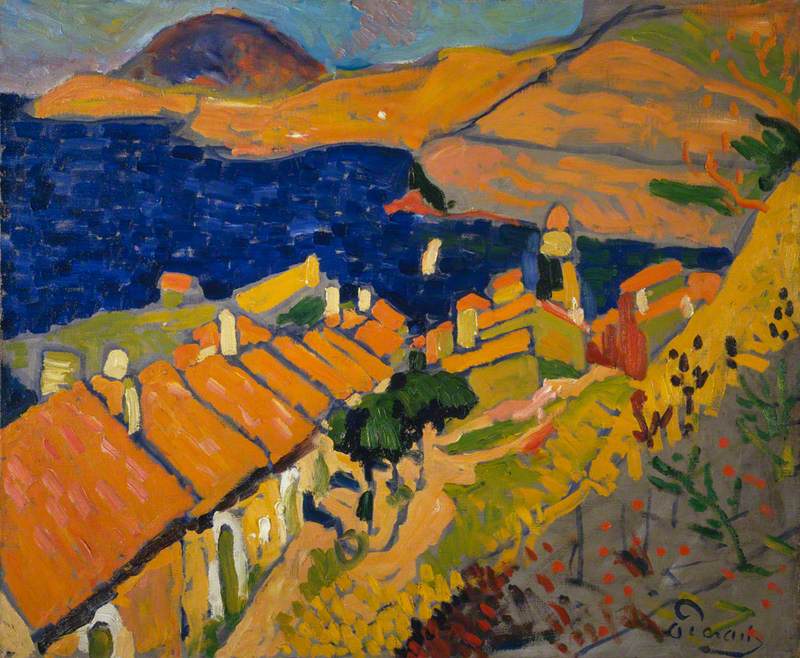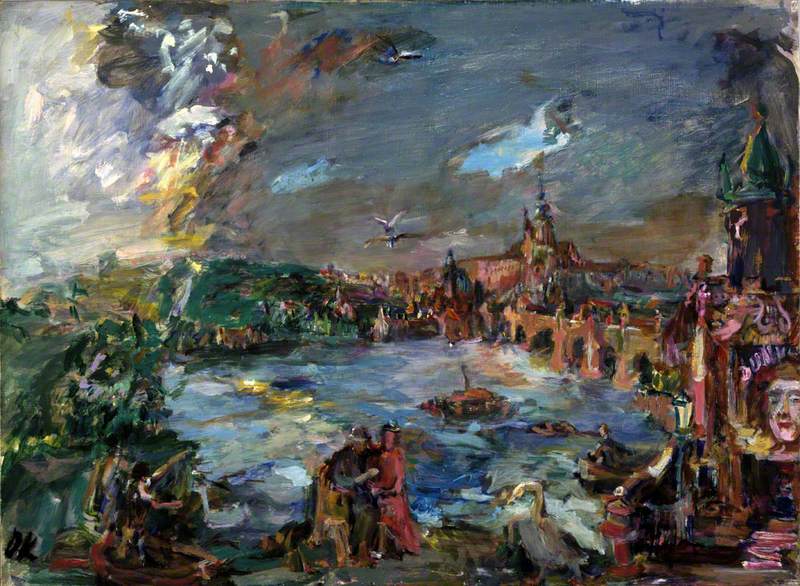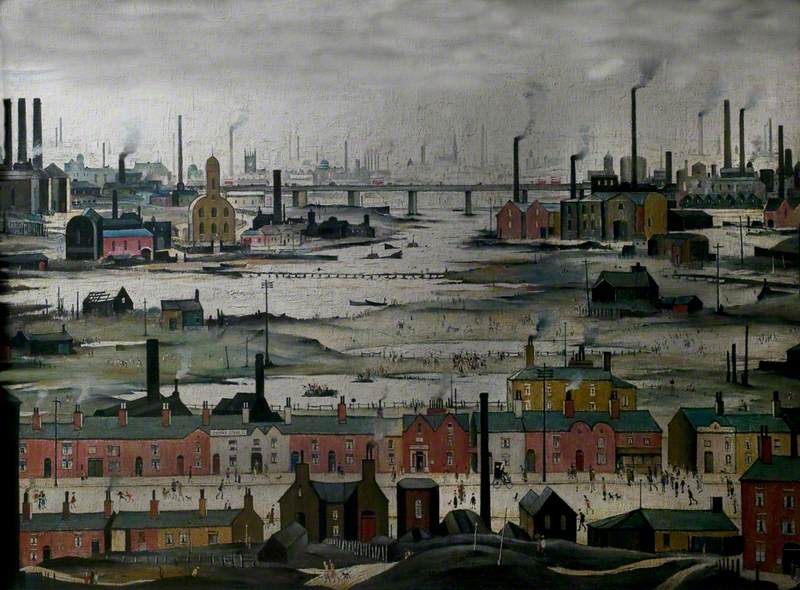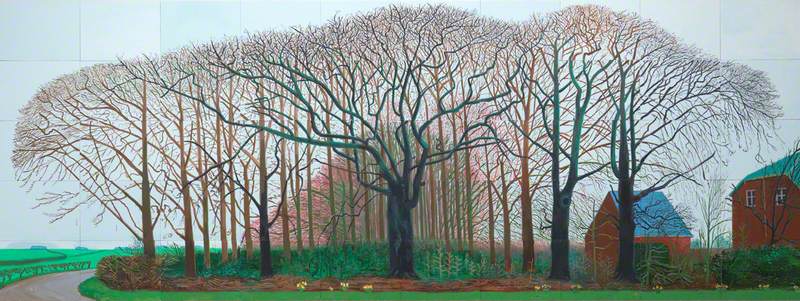Landscape is arguably the most enduringly popular type of painting. For centuries artists have been inspired, compelled and commissioned to paint the world around them. Some landscapes are purely imaginary creations, while others are factual records of specific places, but all can be enjoyed for their escapist pleasure. Landscape has proven to be a truly timeless and universal subject, often reflecting our relationship with an ever-changing world.
-
Landscape with a Footbridge
Landscape with a Footbridge about 1518-20Albrecht Altdorfer was a central figure of the so-called Danube School. These were a group of German artists who were inspired by the landscape of the Danube Valley region. Altdorfer made a major contribution to landscape painting by painting scenes of natural scenery without figures. Landscape with a Footbridge is one of the earliest examples of a pure landscape without any narrative or specific context.
Albrecht Altdorfer (c.1480–1538)
Oil on vellum on wood
H 41.2 x W 35.5 cm
The National Gallery, London
-
Landscape with the Marriage of Isaac and Rebecca
Landscape with the Marriage of Isaac and Rebecca 1648Claude Lorrain ranks as one of the greatest of all landscape painters. Born Claude Gellee in the Duchy of Lorraine, he moved to Rome in around 1628 and remained there for the rest of his life. Most of Claude's paintings feature either a religious or mythological narrative, but it is always the landscape that dominates. He painted harmonious landscapes, whereby nature is presented as more beautiful and ordered than it exists in reality. Tranquil rivers, rustic bridges and classical ruins are the reoccurring motifs in his work. Yet it is the soft, warm light that made his paintings so appealing. He was revered by J.M.W. Turner, and John Constable described him as 'the most perfect landscape painter the world ever saw.'
Claude Lorrain (1604–1682)
Oil on canvas
H 152.3 x W 200.6 cm
The National Gallery, London
-
View of Dordrecht
View of Dordrecht c.1655Aelbert Cuyp was one of the most gifted of all the Dutch Golden Age landscape painters. He favoured river scenes, often defined by a low horizon, implying a low viewpoint. Most notable, however, is the soft, Italianite light which gives his chosen views a sense of calm and warmth. View of Dordrecht is one of his masterpieces. It succeeds in being both factually descriptive and pleasingly escapist.
Aelbert Cuyp (1620–1691)
Oil on canvas
H 97.8 x W 137.8 cm
English Heritage, Kenwood
-
Panoramic View of Haarlem, Holland
Panoramic View of Haarlem, Holland c.1670Jacob van Ruisdael was arguably the greatest landscape painter of the Dutch Golden Age. He demonstrated a greater versatility than most of his contemporaries. His prolific output included panoramic vistas, woodland scenes and coastal views. In this painting of Haarlem and its surrounding countryside, he has placed the horizon low down and allowed two thirds of the canvas to be dominated by billowing clouds. Notice the subtle but realistic interplay of light and shade on the ground.
Jacob van Ruisdael (1628/1629–1682)
Oil on panel
H 43 x W 42 cm
City of London Corporation
-
Landscape with the Colosseum
Landscape with the Colosseum 1725–1750Panini was the most celebrated and popular view painter working in 18th century Rome. He was among the first artists to paint and glorify the city's ancient monuments. He popularised a type of landscape painting known as the Capriccio, whereby actual and imaginary monuments are assembled in a fictional setting. Panini had an international clientele and ran a busy studio to meet the European-wide demand for his paintings.
Giovanni Paolo Panini (1691–1765)
Oil on canvas
H 112 x W 100 cm
English Heritage, Marble Hill House
-
The City from near the Terrace of Somerset House
The City from near the Terrace of Somerset House c.1750Canaletto established himself as the leading view painter in Venice. British visitors to the city eagerly purchased his topographical views of Venetian canals, lagoons, courtyards and piazzas. In 1746 he left Venice for London. His expansive views of London often focus on the River Thames and demonstrate his rare gift for spatial depth and scrupulous detail. He spent nine years in England before returning home to Venice.
Canaletto (1697–1768)
Oil on canvas
H 38.6 x W 72.9 cm
Yale Center for British Art
-
The Fortress of Königstein from the North
The Fortress of Königstein from the North c.1756–1758Bellotto was the nephew of Canaletto. He trained in his uncle's studio where he learnt the skills and techniques of topographical view painting. He later left Italy and worked as a successful court painter in Dresden, Vienna and Warsaw. Like his uncle, Bellotto may well have used a camera obscura as an aid in the production of his precise and detailed landscapes.
Bernardo Bellotto (1722–1780)
Oil on canvas
H 132.1 x W 236.2 cm
The National Gallery, London
-
Grotto in the Gulf of Salerno, Italy, Moonlight
Grotto in the Gulf of Salerno, Italy, Moonlight 1780–1790Joseph Wright of Derby turned to landscape painting in the later period of his career. He travelled to Italy in 1773 and was deeply inspired by its natural and urban landscapes. He was particularly enchanted by the grottoes in the Gulf of Salerno. Visually striking light effects are the hallmark of Wright's paintings, evident in his Italian landscapes. His contrast of dark and light gives his work a visual immediacy that remains as compelling today as it was in the late eighteenth century.
Joseph Wright of Derby (1734–1797)
Oil on canvas
H 101.6 x W 127 cm
Derby Museums
1780–1790, oil on canvas by Joseph Wright of Derby (1734–1797)
-
Staffa, Fingal's Cave
Staffa, Fingal's Cave 1831–1832Turner remains the undisputed master of British landscape painting. He was fascinated by the natural world, most namely its dynamic and unpredictable forces. Light and movement were the two main constituents of his work. Arguably, his greatest strength was to combine his keen observations of the natural world with his singular creative vision. An artist of ceaseless creative and physical energy, he travelled widely and was hugely prolific. As he grew older, he became more technically and stylistically innovative, and produced some of the most progressive paintings of the time. By the end of his life, Turner had broadened the expressive and emotional range of landscape painting.
Joseph Mallord William Turner (1775–1851)
Oil on canvas
H 90.8 x W 121.3 cm
Yale Center for British Art
-
Niagara Falls, from the American Side
Niagara Falls, from the American Side 1867Frederic Edwin Church was one of the first great American landscape painters. He painted big subjects on a big scale. In this painting of Niagara Falls, he has devoted much of the canvas to the immensity of its white watery abyss.
Frederic Edwin Church (1826–1900)
Oil on canvas
H 257.5 x W 227.3 cm
National Galleries of Scotland
-
Autumn Effect at Argenteuil
Autumn Effect at Argenteuil 1873Monet and his fellow French Impressionist painters revolutionised landscape painting. Rejecting the traditional modes of seeing and depicting the world, Monet painted directly from nature, used pure colours and applied paint in short, broken brushstrokes to capture transient effects of light and atmosphere. He avoided laborious detail to record an 'impression' of a chosen time and place. Monet's paintings remain universally popular and his influence on landscape painting is, frankly, impossible to measure.
Claude Monet (1840–1926)
Oil on canvas
H 55 x W 74.5 cm
The Courtauld, London (Samuel Courtauld Trust)
-
A Wheatfield, with Cypresses
A Wheatfield, with Cypresses 1889In his short life, Vincent van Gogh created some of the most recognisable landscape paintings ever made, characterised by thickly applied paint, flowing brushwork and strong colours. His highly subjective landscapes are invested with an intensely emotional response to the natural world. In this paining, almost every feature contributes to a sense of ceaseless rhythm.
Vincent van Gogh (1853–1890)
Oil on canvas
H 72.1 x W 90.9 cm
The National Gallery, London
The National Gallery, London
-
Colliore
Collioure 1905Andre Derain was a co-founder of Fauvism, an art movement defined by bold, vigorous brushwork and intense, clashing colours. In 1905 Derain visited Collioure in southern France with his friend Henri Matisse. Both men were struck by the strong light and responded by painting landscapes filled with vibrant colours and confident brushwork. At this stage of his career, Derain was among the most avant-garde artists and produced some of the most radical landscapes of the modern era.
André Derain (1880–1954)
Oil on canvas
H 60.2 x W 73.5 cm
National Galleries of Scotland
-
Prague, Nostalgia
Prague, Nostalgia 1938Prague, Nostalgia was painted in London after Kokoschka and his future wife fled Czechoslovakia in 1938. Many of the city's most beautiful features can be seen. Kokoschka's tumultuous brushwork conveys the emotional upheaval he must have felt having to leave Prague due to the threat of Nazi aggression. He painted over one hundred cityscapes in his lifetime, among them views of Dresden, London, Florence, Istanbul and Jerusalem.
Oskar Kokoschka (1886–1980)
Oil on canvas
H 56 x W 76 cm
National Galleries of Scotland
-
Industrial Landscape, River Scene
Industrial Landscape, River Scene 1950L.S. Lowry's industrial landscapes are some of the most instantly recognisable artworks of modern British art. Although they were largely the product of his imagination, he was inspired by the sprawling industrial region of Manchester. His paintings often take an elevated view and afford the viewer a seemingly endless expanse of factories, chimneys and houses.
Laurence Stephen Lowry (1887–1976)
Oil on canvas
H 110.2 x W 148.3 cm
Leicester Museums and Galleries
-
Echo Lake
Echo Lake 1998Peter Doig has been integral to the revival of international landscape painting in contemporary art. His landscape paintings are notable for their surreal, dreamlike atmosphere. For Doig, the landscape is often a setting for an enigmatic narrative, in which the boundaries between reality, memory and imagination are blurred.
Peter Doig (b.1959)
Oil on canvas
H 230.5 x W 360.5 cm
Tate
-
Bigger Trees Near Warter Or/Ou Peinture Sur Le Motif Pour Le Nouvel Age Post-Photographique
Bigger Trees Near Warter Or/Ou Peinture Sur Le Motif Pour Le Nouvel Age Post-Photographique 2007Landscape painting has been central to Hockney's artistic output since his formative years in his native Bradford. Bigger Trees Near Warter is one of his most ambitious works. Measuring more than four and a half by twelve metres, the painting is made up of fifty panels. The subject is a landscape near Warter, west of Bridlington. It took Hockney six weeks to complete.
David Hockney (b.1937)
Oil paint on 50 canvases and 100 digital prints, colour, on paper
H 459 x W 1225 cm
Tate
Explore artists in this Curation
View all 17-
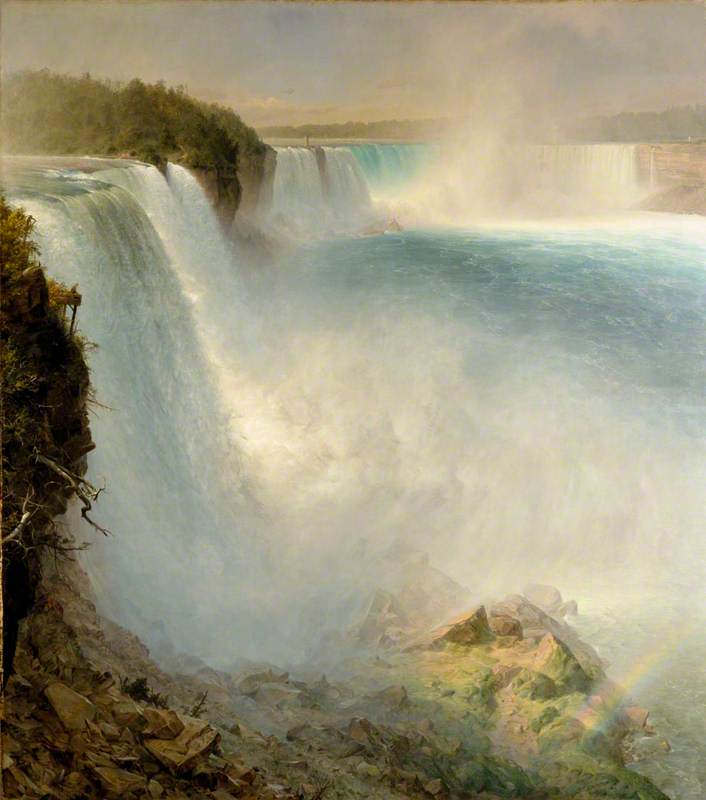 Frederic Edwin Church (1826–1900)
Frederic Edwin Church (1826–1900) -
 Albrecht Altdorfer (c.1480–1538)
Albrecht Altdorfer (c.1480–1538) -
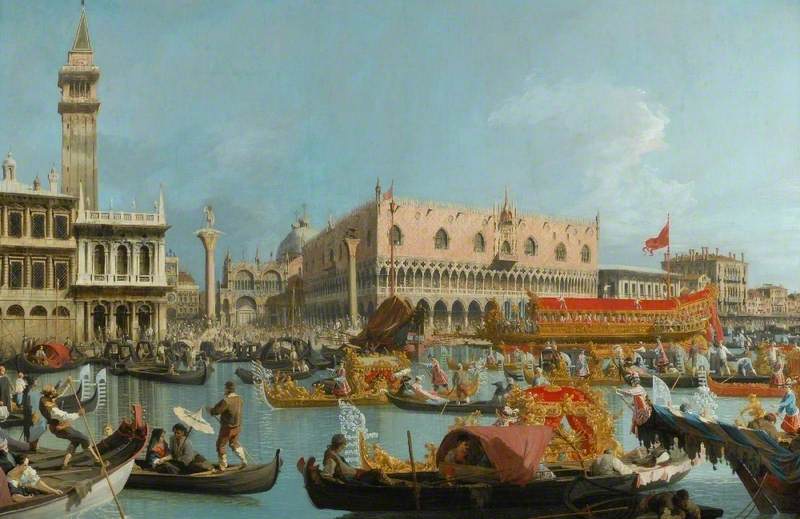 Canaletto (1697–1768)
Canaletto (1697–1768) -
 Vincent van Gogh (1853–1890)
Vincent van Gogh (1853–1890) -
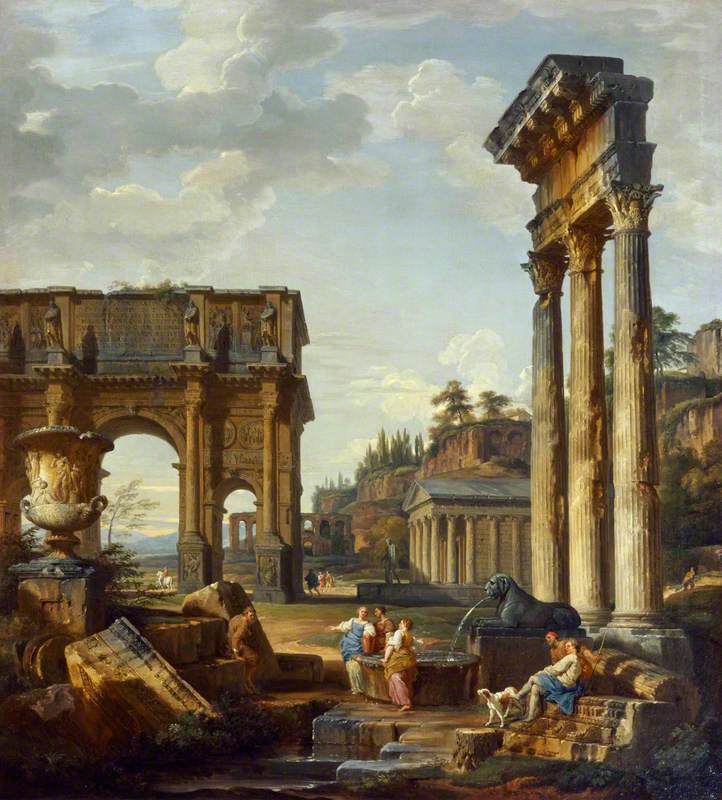 Giovanni Paolo Panini (1691–1765)
Giovanni Paolo Panini (1691–1765) -
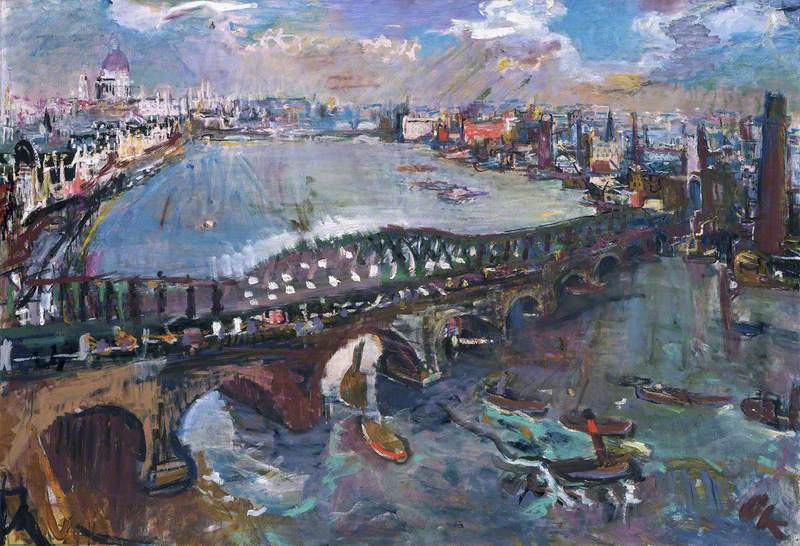 Oskar Kokoschka (1886–1980)
Oskar Kokoschka (1886–1980) -
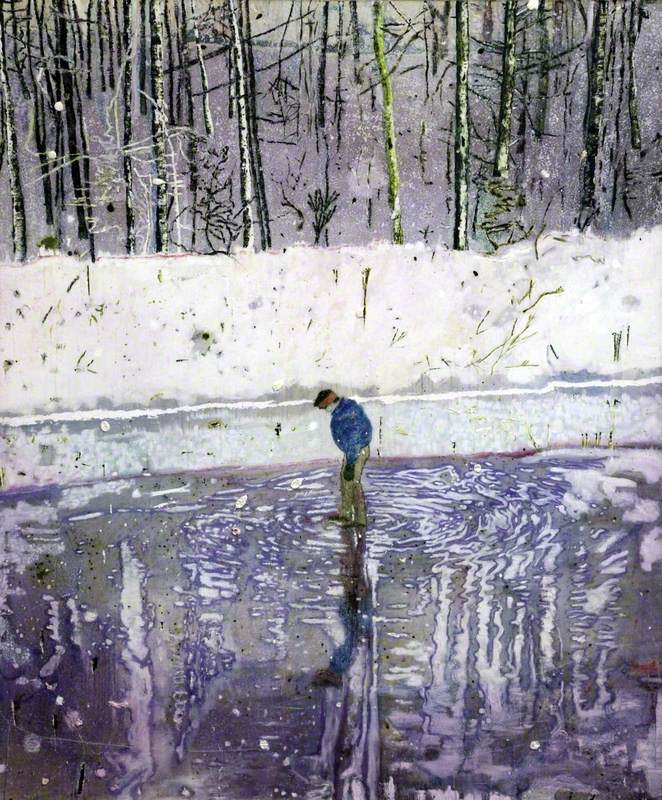 Peter Doig (b.1959)
Peter Doig (b.1959) -
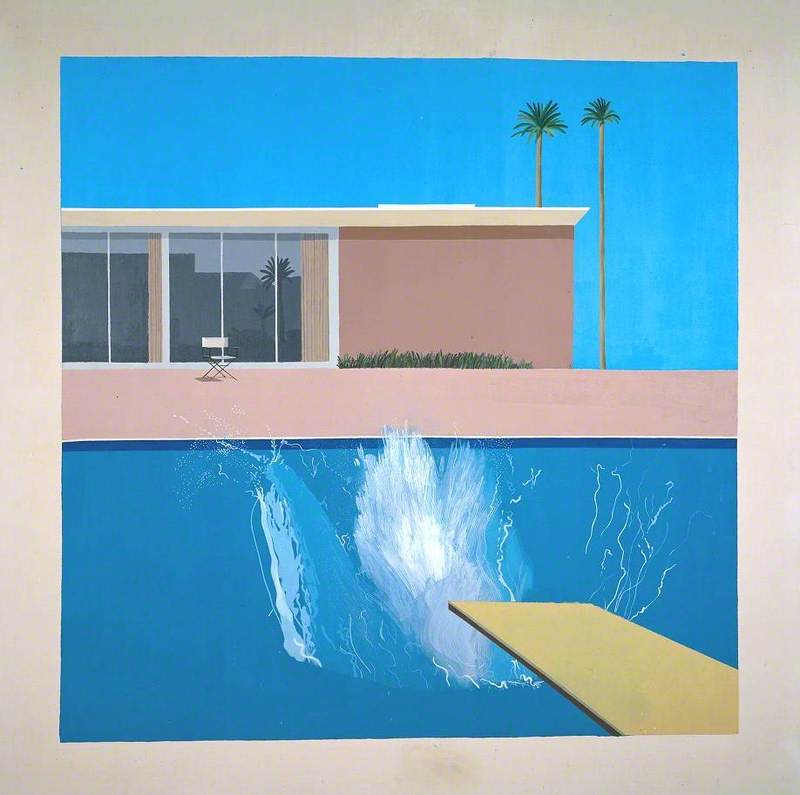 David Hockney (b.1937)
David Hockney (b.1937) -
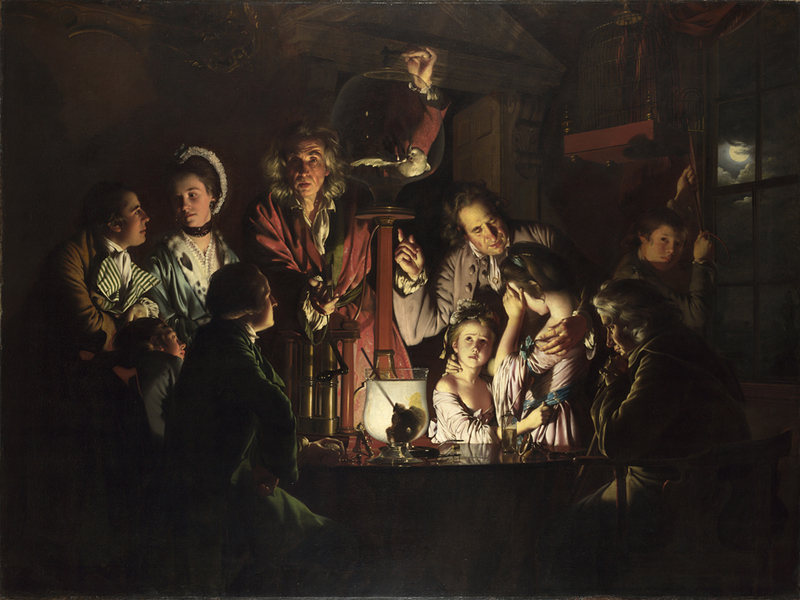 Joseph Wright of Derby (1734–1797)
Joseph Wright of Derby (1734–1797) -
 Laurence Stephen Lowry (1887–1976)
Laurence Stephen Lowry (1887–1976) - View all 17
